The ASUS Zenfone Zoom is aimed at camera enthusiasts having a 3X optical zoom on its main camera. Being a flagship, the smartphone also offers killer specifications like the quad-core 2.5 GHz Intel Atom Z3590 processor, a big 4 GB RAM for multitasking and a 128 GB storage to store all your camera needs. I have spent a couple of weeks with the Zenfone Zoom and here’s our ASUS Zenfone Zoom review.
ASUS Zenfone Zoom – Review
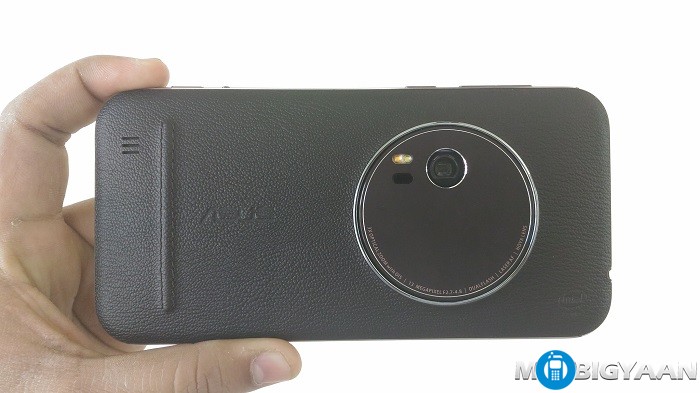
ASUS Zenfone Zoom Specifications
- Display: 5.5-inch Full HD IPS Display (403 ppi pixel density) with 60ms touch response and protected by Corning Gorilla Glass 4
- Software: Android 5.0 (Lollipop) with ZenUI
- Processor: 64-bit Intel® Atom Z3590 2.5GHz
- GPU: PowerVR 6430 clocked at 640MHz
- Memory: 4GB LPDDR3 RAM (64-bit Dual-Channel)
- Storage: 128 GB eMCP internal storage, Expandable up to 128 GB using MicroSD, 100 GB of Google Drive storage, Lifetime 5 GB free ASUS WebStorage
- Main Camera: 13 MP, 10P HOYA lens, 3X optical zoom, 12X total zoom 4 Stop OIS (Optical Image Stabilization) support, Laser autofocus, dual tone LED flash, Real dedicated shutter and recording keys, Volume button labeled as T and W for zooming.
- Front Camera: 5 MP wide angle lens, 140-degree Selfie Panorama
- Connectivity: WLAN 802.11 a/b/g/n/ac, Bluetooth V4.0 + EDR, NFC, GPS, GLONASS, QZSS, SBAS, BDS, 3.5 mm Audio Jack, Micro USB port
- Sensors: Accelerator, E-Compass, Gyroscope, Proximity, Ambient Light Sensor, Hall Sensor
- Network: Single SIM, supports 4G LTE network, Nano SIM Slot, LTE Cat4 150 Mbps Download, 50 Mbps Upload
- Battery: 3000 mAh Li-Polymer (non-removable)
- Dimensions: 158.9 mm x 78.84 mm x 11.95 mm (5 mm edge)
- Weight: 185 grams
- Color Variant: Black and White
Design and Build
If you have ever used the Zenfone series, you will actually feel like you are operating the rest of the Zenfones. It has the same Zenfone 2 resemblance and it almost look like the same as Zenfone Max. What puts the difference is the aluminum frame and the big camera at the back.
Having large bezels on the sides, the ASUS Zenfone Zoom is sized 5.5-inch with full HD IPS display. It weighs 185 grams which isn’t too heavy considering the large camera module takes some weight.
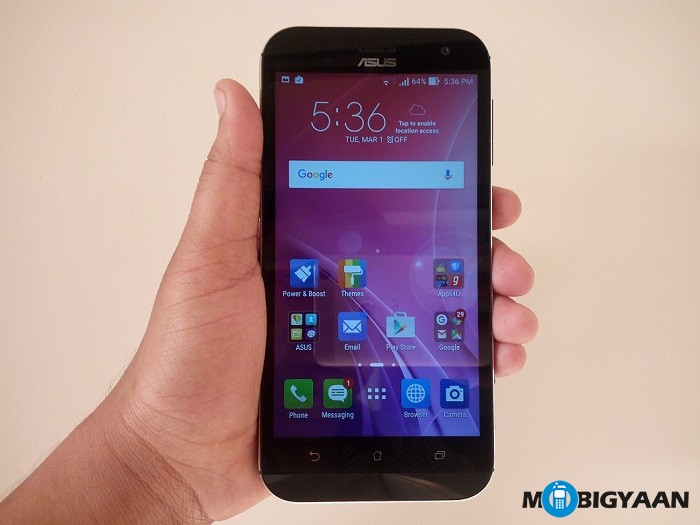
The 5 MP camera is located at the top that also lies a couple of sensors. The shiny capacitive touch buttons do not light up. ASUS preferred not to use it despite being a flagship. The ASUS Zenfone Zoom is covered with a metallic frame which will feel premium when you hold, unlike the previous Zenfones having a plastic frame.
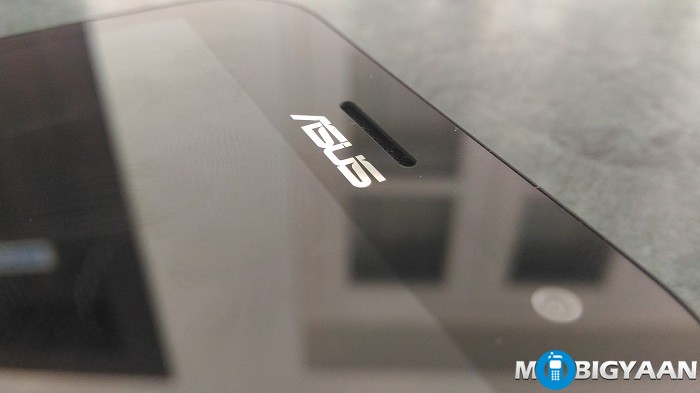
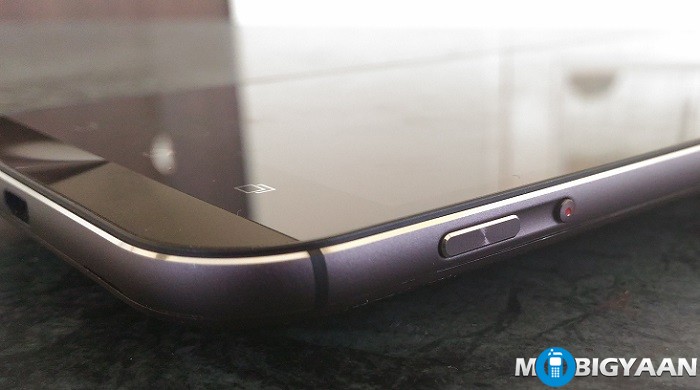
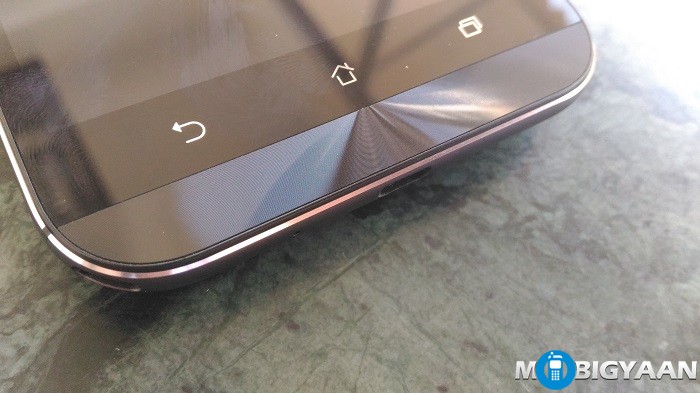
On flipping the smartphone, there you have its amazing stunner the 13 MP camera with 3X optical zoom. What is more interesting is, when using the optical zoom, the camera does not pop out from the surface itself just like you see in the traditional digital cameras. The back reminds me of the Lumia 1020 camera design. The back body has a leather finishing that makes it stand out among other smartphones. Although the cover is removable for inserting SIM and a Micro SD expansion, the battery cannot be removed. It comes with a 3000 mAh Li-Polymer battery.
The back reminds me of the Lumia 1020 camera design. The back body has a leather finishing that makes it stand out among other smartphones. Although the cover is removable for inserting SIM and a Micro SD expansion, the battery cannot be removed. It comes with a 3000 mAh Li-Polymer battery.
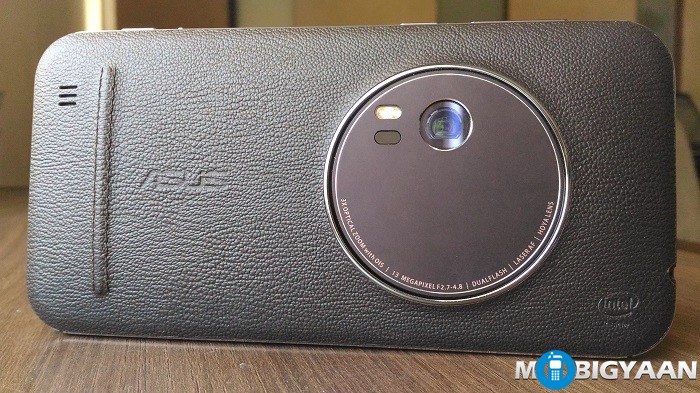
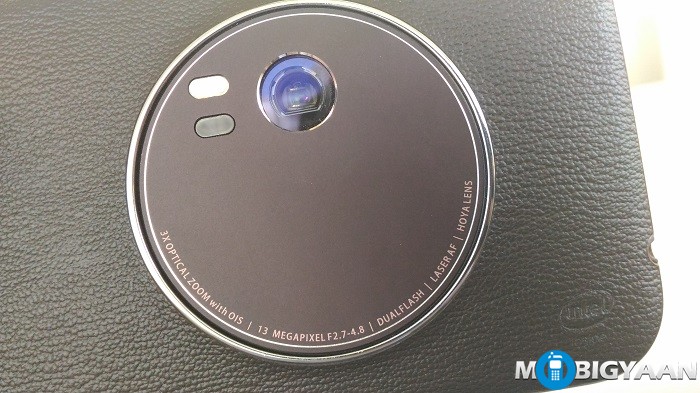
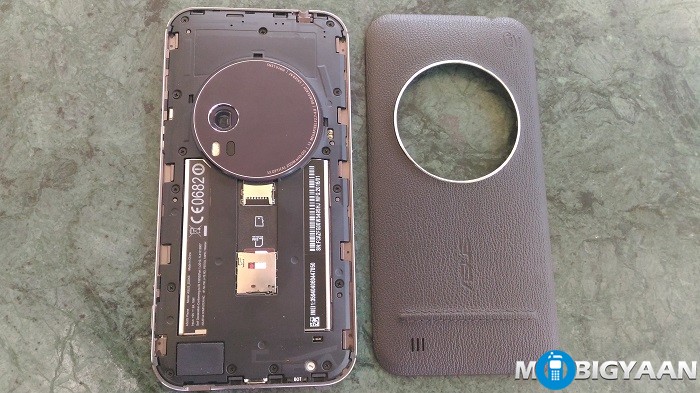
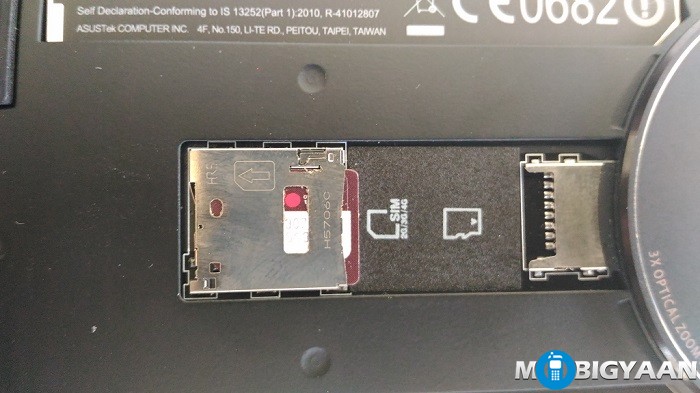
It supports one nano-SIM card and LTE network. Below are the ASUS branding engraved on the leather, a speaker grill and in between is a small hump aiding the camera when you place the smartphone on a surface.
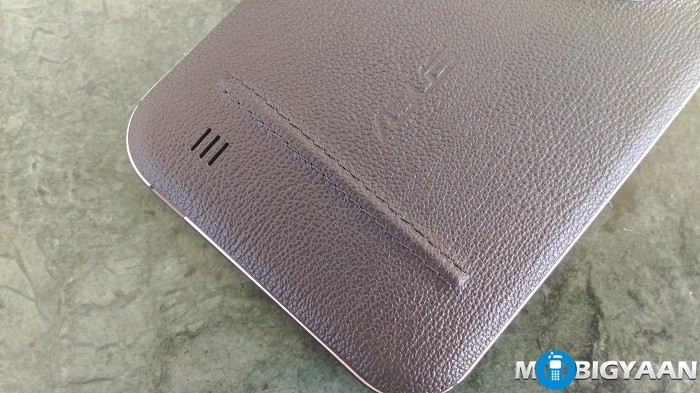

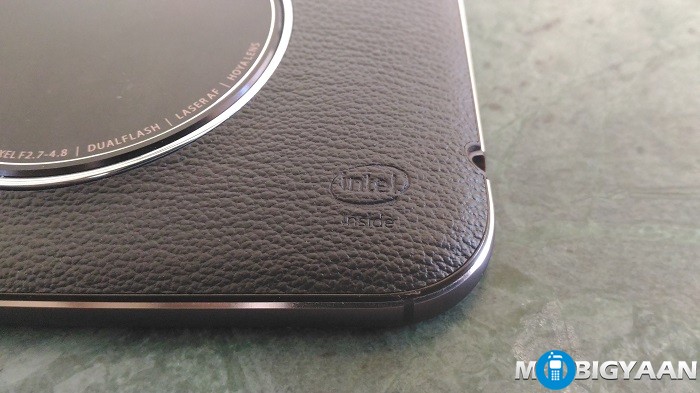
What I find it the best is the dedicated camera shutter key as well as the a direct video recording key that captures 1080p videos. The volume keys are labeled as T and W that are used for camera zooming. The overall feel is what you get is like a digital camera. On the right, you will find a sleek power button while the left is kept all empty.
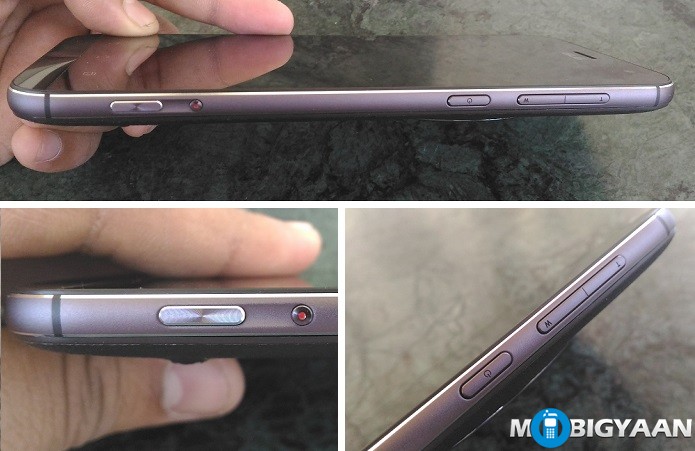
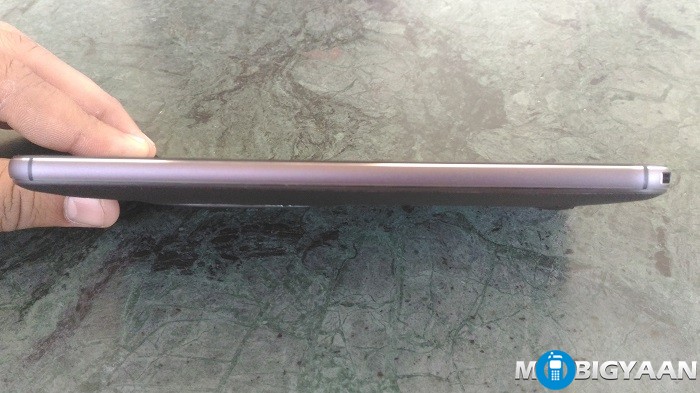
The 3.5 mm audio jack is placed on the top along with a microphone. There are actually two microphones, the other is located at the bottom that also has a Micro USB port. You can attach a small lanyard at the bottom-left corner. The lanyard hole is found in most of the point and shoot cameras and the Zenfone Zoom has it.
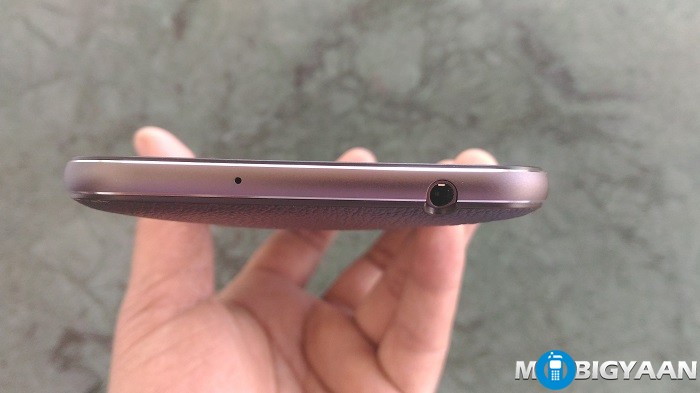
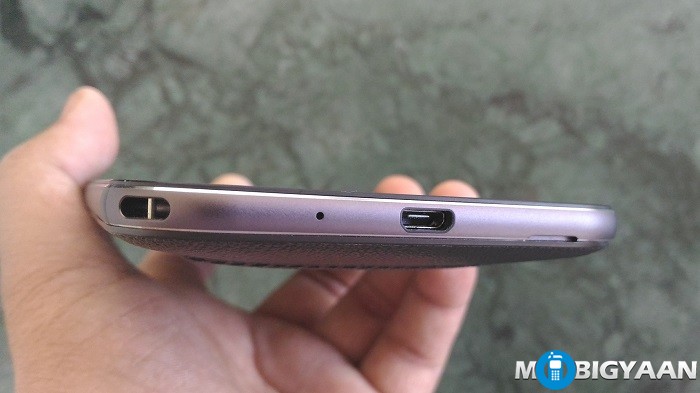
Display
With a dazzling 5.5-inch 1920 x 1080 pixels IPS display covered by Corning Gorilla
Glass 4, the display on the Zenfone Zoom did not surprise us. The flagship segment is now all about the 2K display but ASUS did not boast a 2K display in the Zenfone Zoom. The same display was also spotted on the ASUS Zenfone 2 Deluxe.
The large unpleasant black display bezels were annoying but can be ignored if you are not too much worried about it. It has great viewing angles and the visibility under direct sunlight as well as under sunlight shade isn’t that great, however, satisfactory.
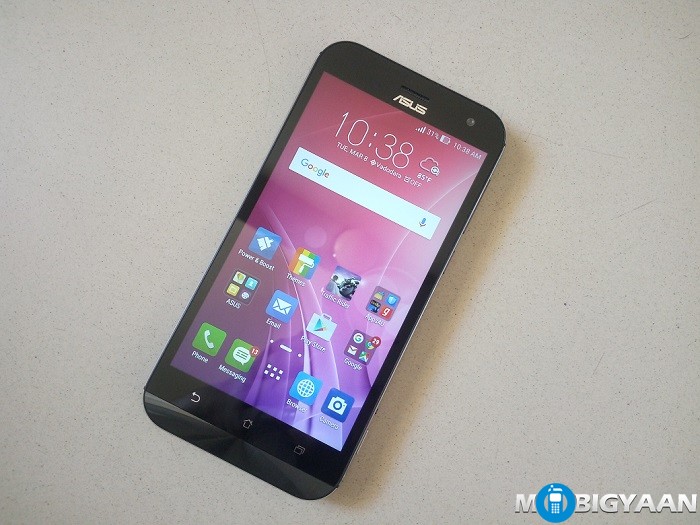
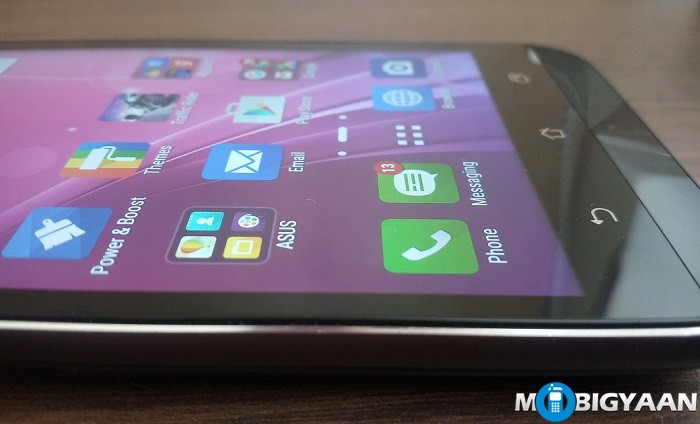
Since the display is similar to the one used in the last year’s flagship Zenfone 2, the colors and contrast levels on the Zenfone Zoom look decent. The same image quality has been observed in the Zenfone 2. ASUS provides a color setting in the display settings. There are four options – Balance, Bluelight Filter, Vivid, and Customized. The color temperature can be tweaked from cool to warm and vice versa. I liked the warm effect, though.
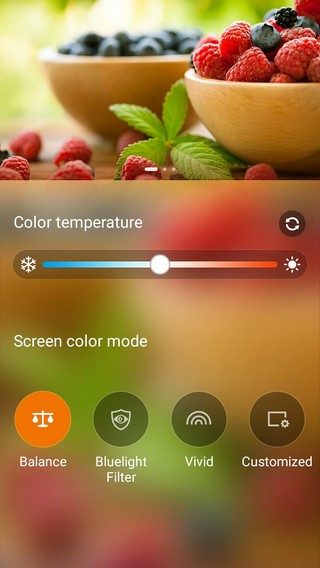
Software and UI
It runs on Android 5.0 Lollipop. The user interface is covered with a ZenUI skin that is highly customized with several features and enhancements making it different from the regular Android interface, however, some people may find it a bit complex at times. The user interface is fluid, thanks to Intel Atom processor. The Zenfone comes with several preinstalled apps that might be useful for a newbie albeit some people may find it bloatware. Nevertheless, they can be removed or disabled if not required.
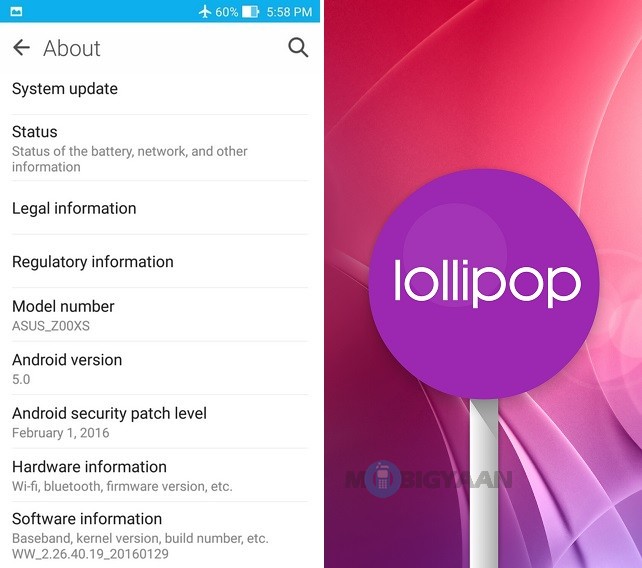
The homescreen looks exactly the same in all ll the Zenfones unless there are any added extra features. The drop down notification bar comes with a plethora of options and can be useful for accessing the quick settings such as a flashlight, calculator, a Bluelight filter, and more settings can be customized with the edit option.
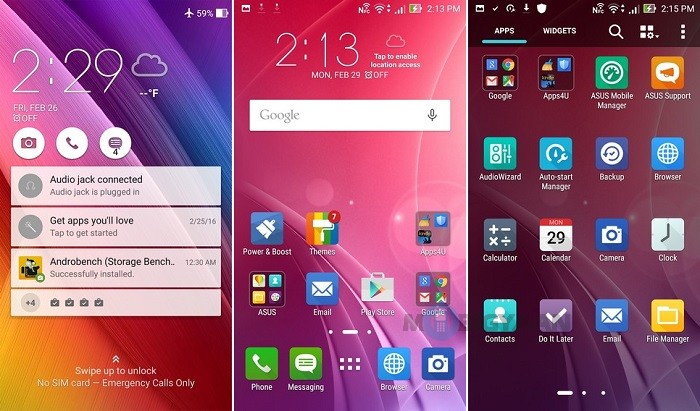
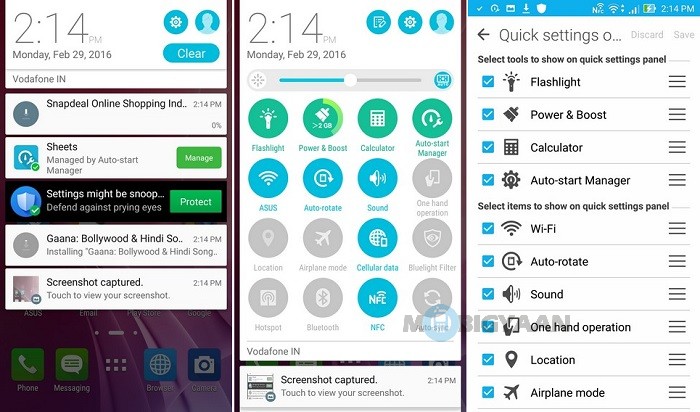
The interface can be further customized with the homescreen management. Swiping from the bottom to top when you are on the homescreen will take you to the homescreen management where you can choose widgets, wallpapers, themes, and many more. Swiping from the top to bottom will get you a Google Now look like screen where you can make your searches. The well-designed keyboard is again the same from the Zenfone series.
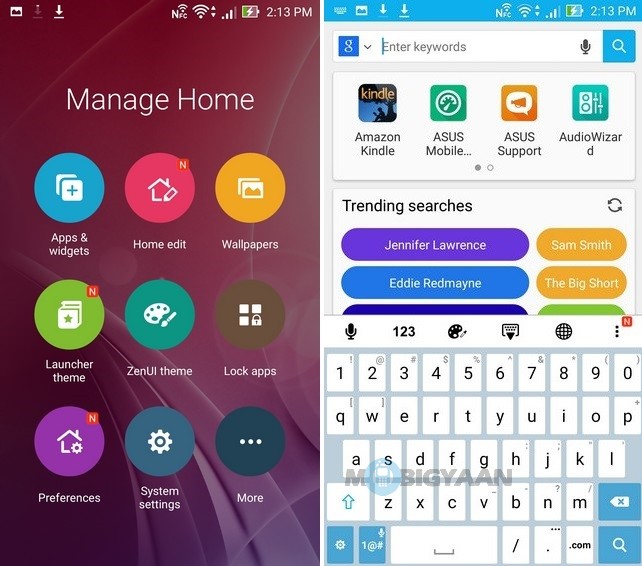
Other things you can play with the interface is the themes. There are customized themes available for the ZenUI from ASUS you can download online from the preinstalled ‘Themes’ app. The ZenUI is same on all the Zenfones, the rest of the software part we have it covered in our previous Zenfone reviews.
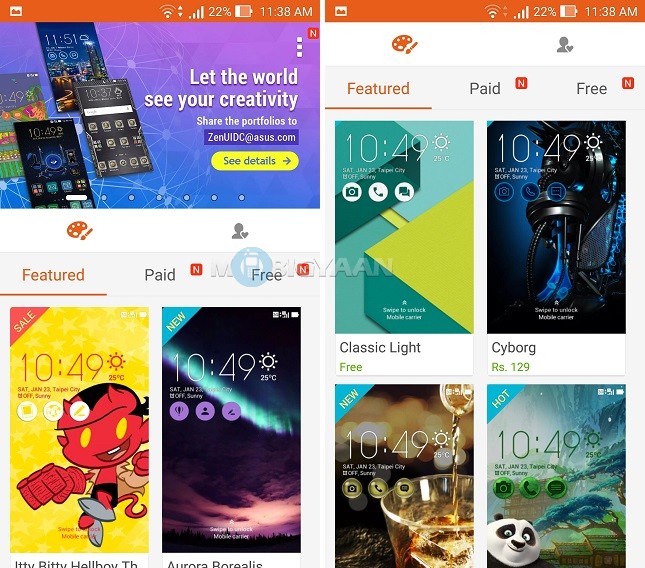
Performance, Hardware, and Gaming
It is powered by, again, an Intel Atom processor. Looks like ASUS is sticking with the Atom based processors. The performance has increased substantially comparing with the Zenfone 2 Deluxe but the Atom processors look pretty stagnant on smartphones though they really are powerful to handle any task you throw.
The ASUS Zenfone Zoom is powered by quad-core Intel Atom Z3590 processor codenamed Moorefield clocked at 2.5 GHz along with a massive 4 GB of RAM and a PowerVR G6430 GPU. No major lags found as well as no apps crashing reports found on the Zenfone Zoom, the performance is exceptionally fluid. The massive 4 GB RAM can handle RAM hungry apps.
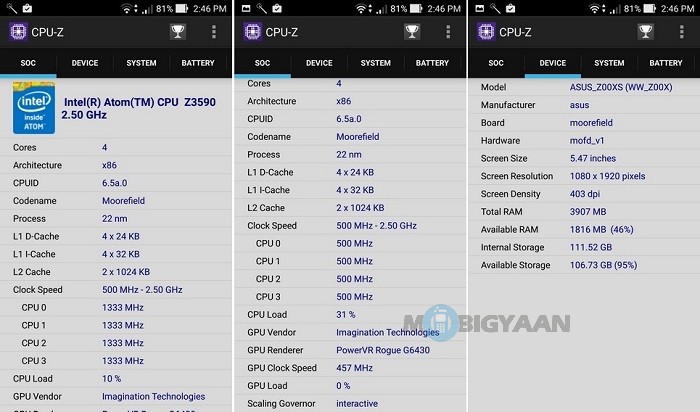
We ran some benchmark tests on the ASUS Zenfone Zoom. The AnTuTu benchmark scored 56632 points. The score isn’t close to the Samsung Galaxy S6 or the Sony Xperia Z5 yet the real world performance is on the same level with what the competitors offer. The Geekbench scored 962 points (single-core) and 2897 points (multi-core). Check the full Geekbench 3 benchmark test of the Zenfone Zoom.
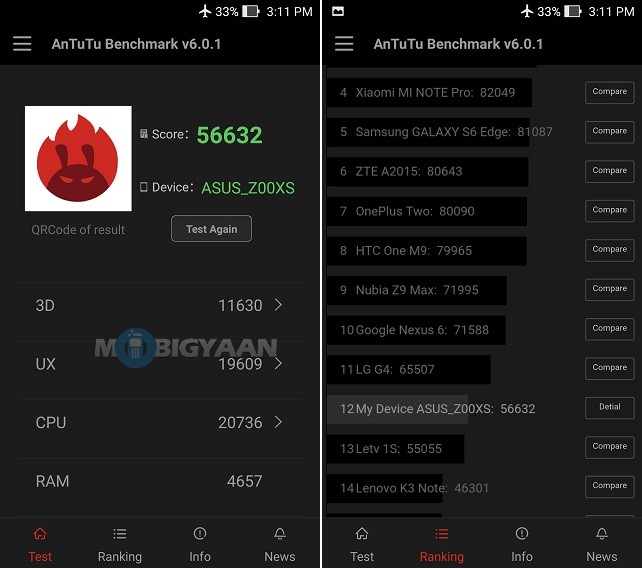
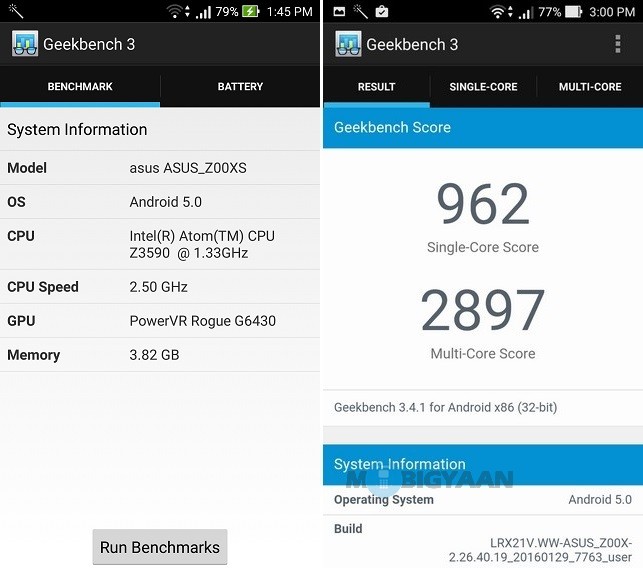
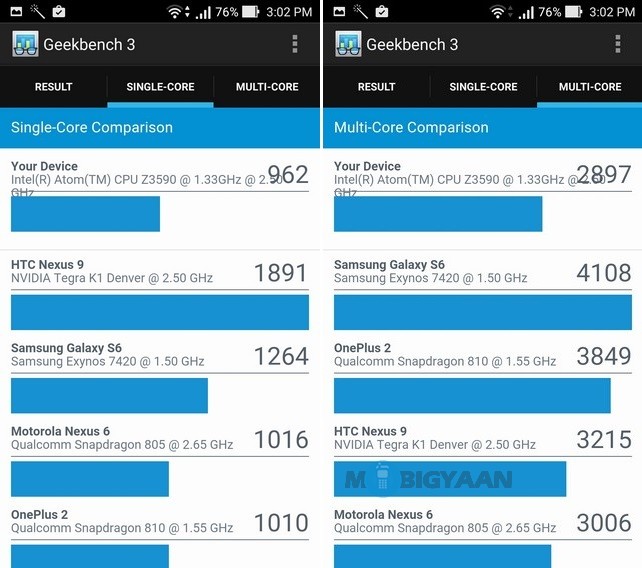
Talking about the gaming, the first and foremost, the smartphone heats at the area where the big camera module is located. The side metal frame will get hot as well. We installed games like Mortal Combat X, Asphalt 8, Modern Combat 5, and a few apps such as Facebook, SoundCloud, and many others. The performance is no slouch when it comes to gaming.
Zenfone Max was litter hotter when gaming and camera usage. The temperatures according to the HW Monitor were around 41 degrees.
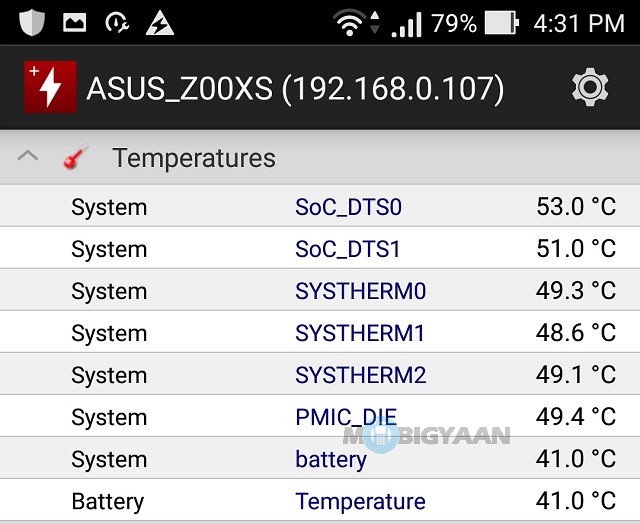
Games Tested on ASUS Zenfone Zoom:
- Asphalt 8
- Modern Combat 5
- Traffic Rider
- Angry Birds 2
- Mortal Combat X
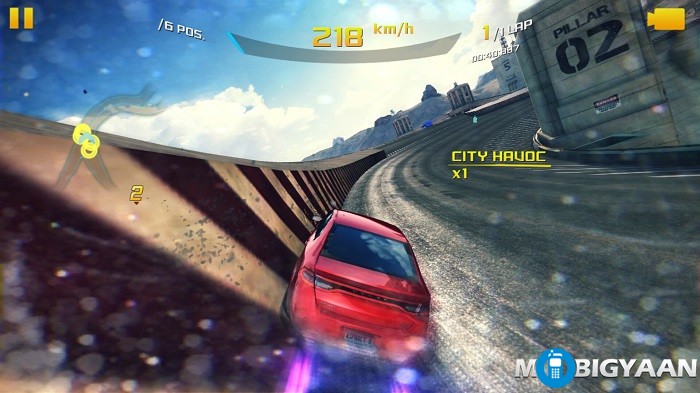
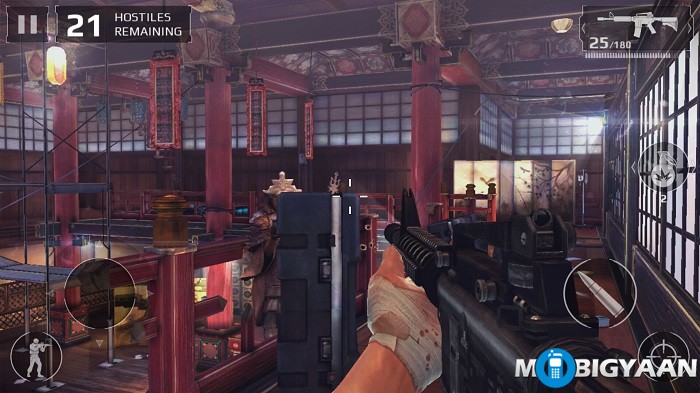
The 4 GB RAM is extraordinary for a regular use. You will find more free RAM on Zenfone Zoom available. The below screenshot shows that there is plenty of free memory (2.4 GB) available to use, hence, RAM-hungry apps can sit right on the phone without slowing down the performance.
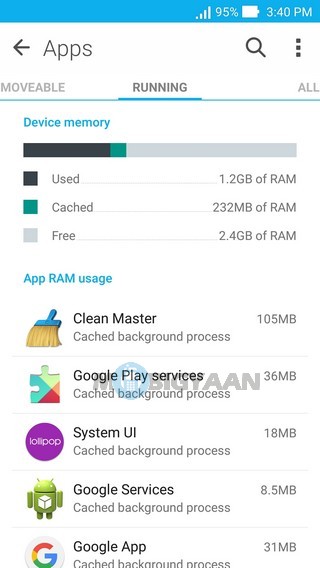
Camera
The Zenfone Zoom boasts a 13 MP laser focus rear-facing camera with 3X optical zoom. The maximum zoom it supports a maximum 12X zoom combined with the optical zoom which rather isn’t available on most of the smartphones. The laser auto-focus as seen in the Zenfone 2 series is very fast focusing the objects. The camera uses a 10-element HOYA lens to get you crisp details. Moreover, the camera has 4-stop OIS (Optical Image Stabilization) support for rock-steady photography.

- Camera: 13 MP, Laser Autofocus (0.03 sec), 10-element HOYA lens, Dual-LED real tone flash
- Sensor: Panasonic SmartFSI image sensor
- Optical Image Stabilization (OIS): Yes, 4 Stops
- Zoom: 3x Optical Zoom (28-84mm focal length), 12X Digital Zoom
- Camera Keys: 2-stage button, 1 dedicated video recording button, Volume keys labeled as T and W for zoom functioning
- Features: Close-up macro photography (5 cm), 32 second long exposure, Geo-tagging, Tap to Focus, Manual, HDR, Super Resolution, Low Light, Night, Depth of Field, GIF Animation, Beautification, face detection, Panorama, Timeshift video, Miniature, Smart Remove, Slow Motion, Time Lapse.
- Video: Max 1920 x 1080 pixels video recording
- Front Camera: 5 MP wide-angle, 140-degree Selfie Panorama
The best thing I found is the 2-stage dedicated camera key to capture photos and a small video recording button alongside it. And that’s not it, the volume keys are labeled as T & W for zooming. The overall feel is what you get on a digital camera itself. The laser auto-focus captures very close up macro shots (5 cm) in 0.03 seconds.

The same camera software can be found on the Zenfone Zoom. There is a manual more shortcut icon to instantly change to manual mode. Other modes can be found at the four blocks located on the camera interface. Here are some options that the camera supports – Low Light, Super Resolution, Night, face detection, Depth of Field, Panorama, GIF Animation, Smart Remove, Slow Motion, Timeshift video, and Time Lapse. The settings gear will reveal the camera settings to setup the camera such as IOS value, exposure, megapixels, etc.
We snapped some shots using the ASUS Zenfone Zoom camera including the which optical zooming functionality of the camera. Here are the camera samples:
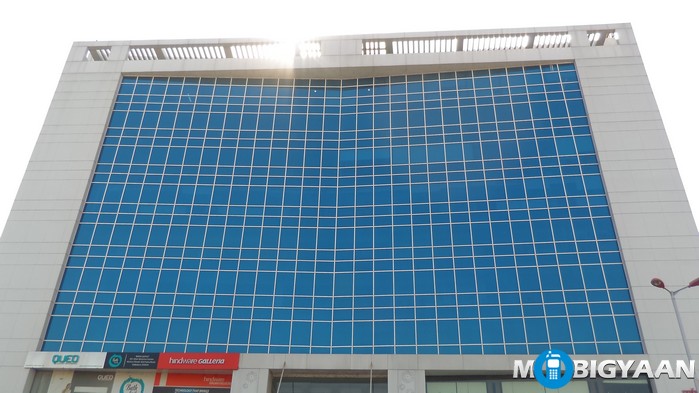
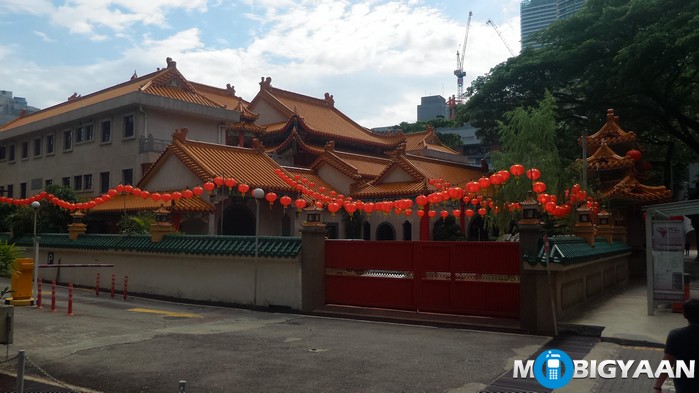
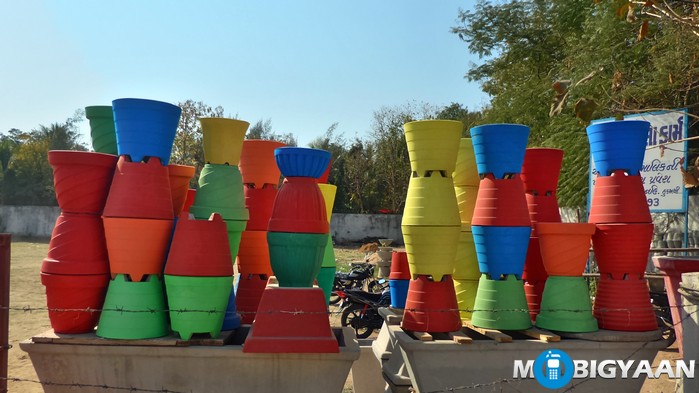
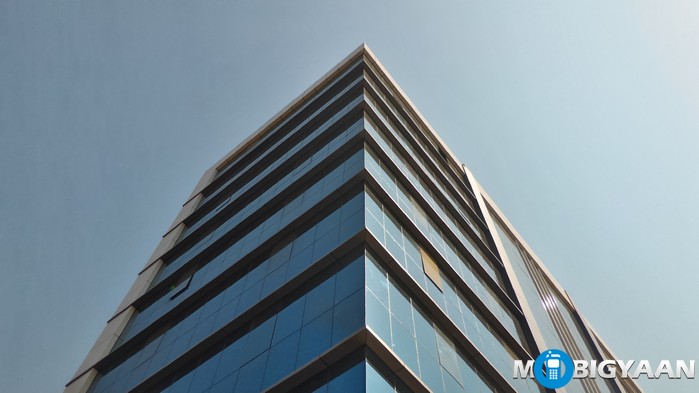

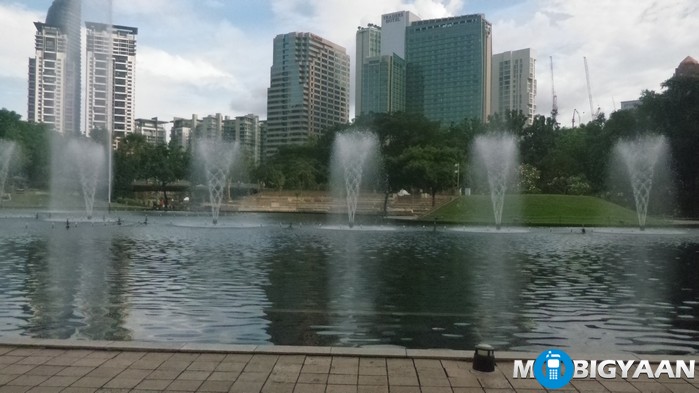

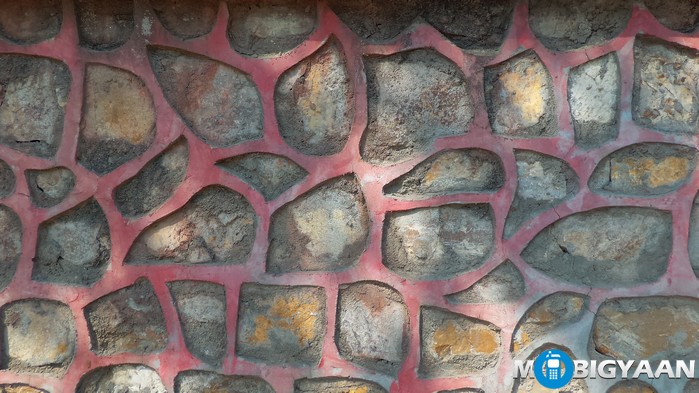
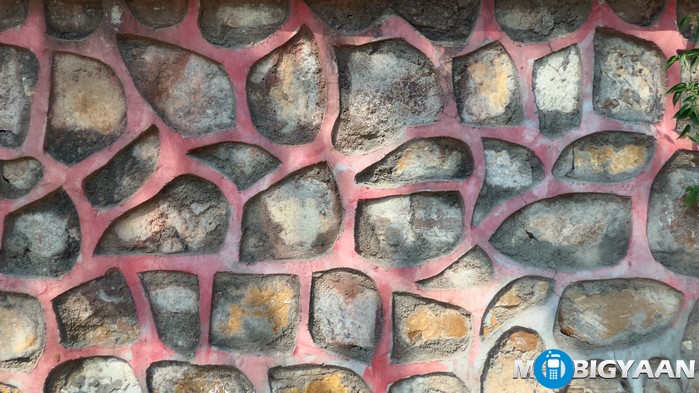

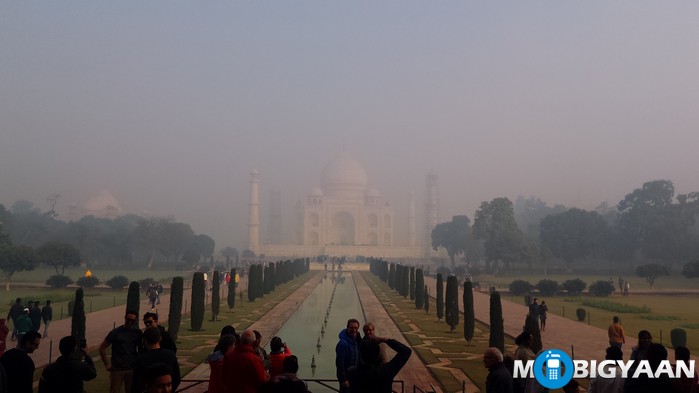

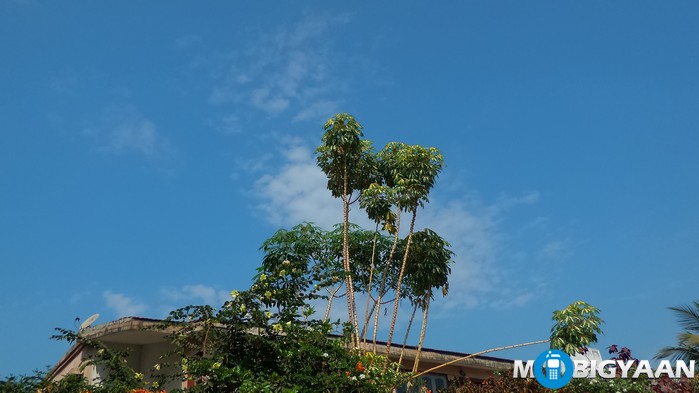





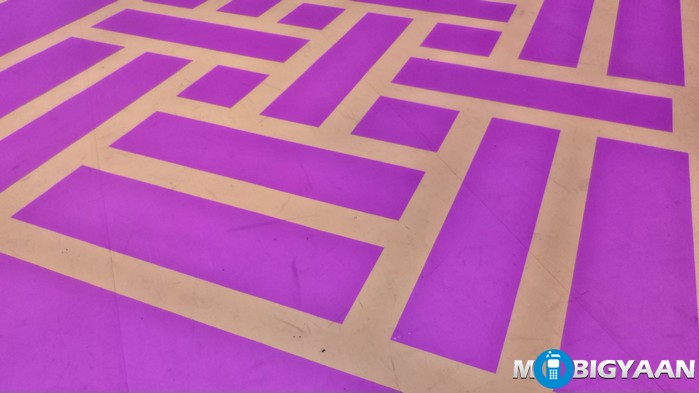


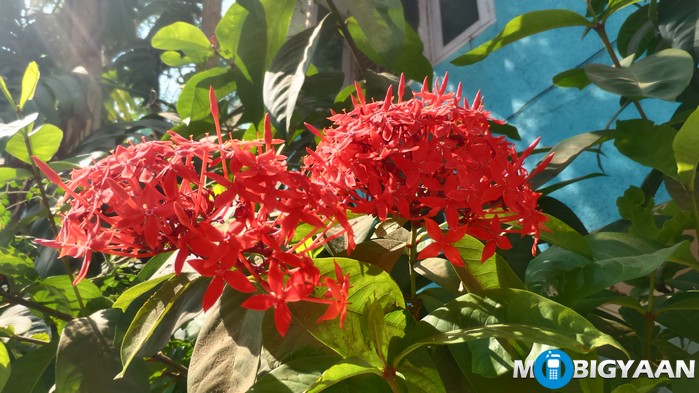

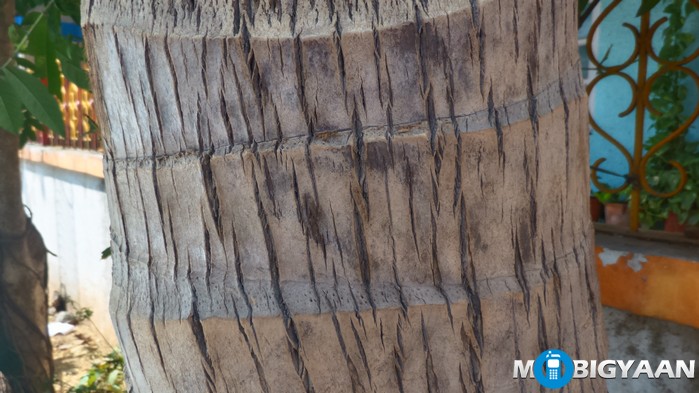
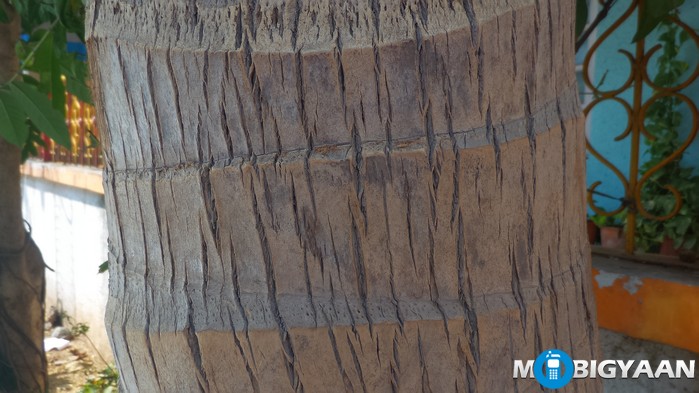
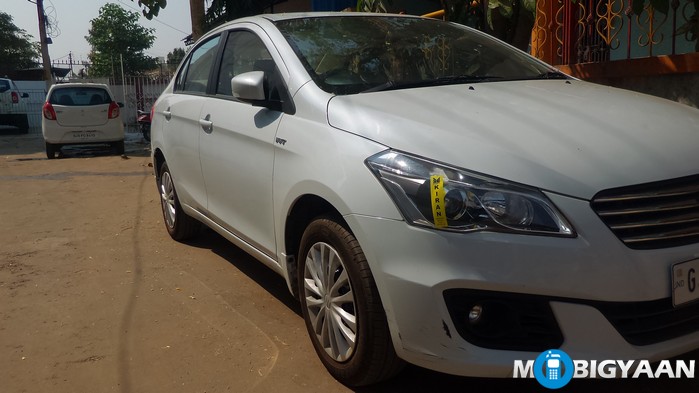

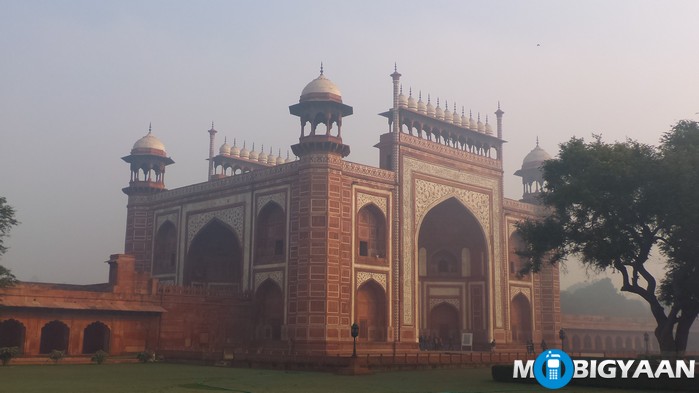
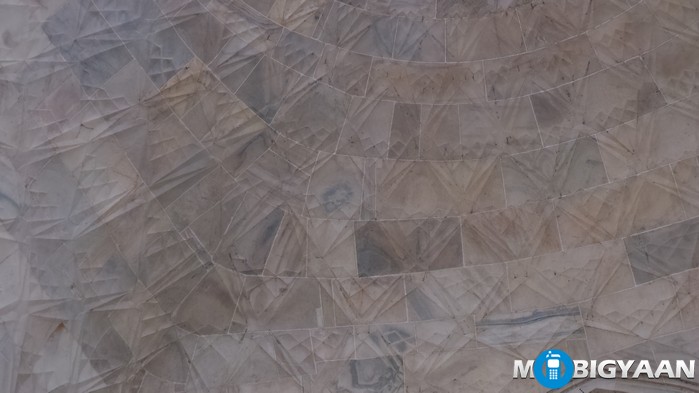
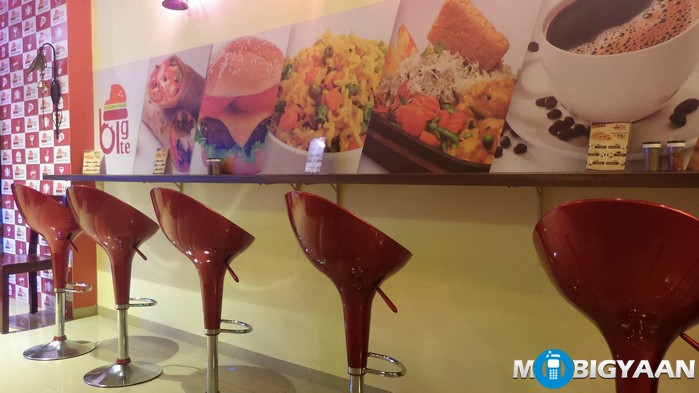
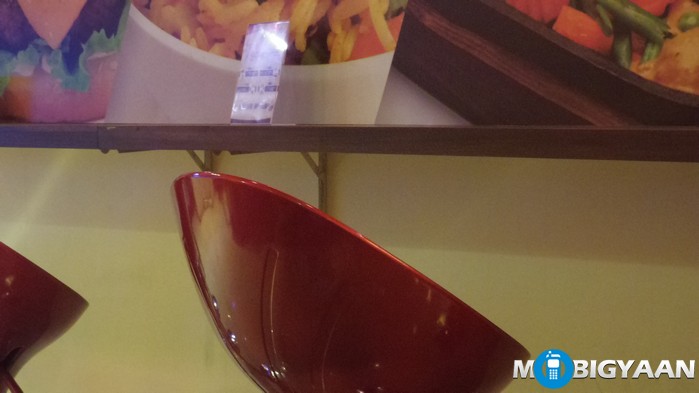
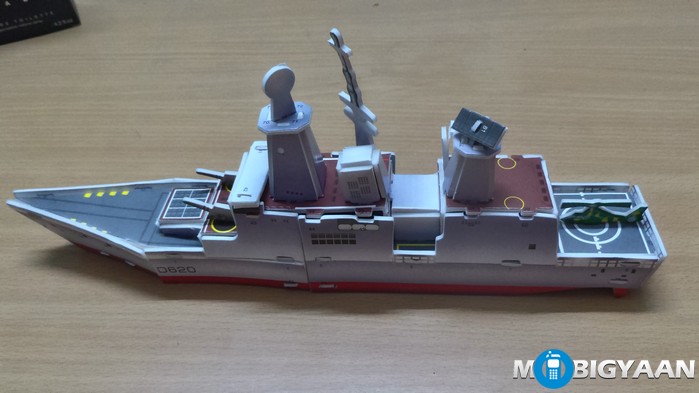
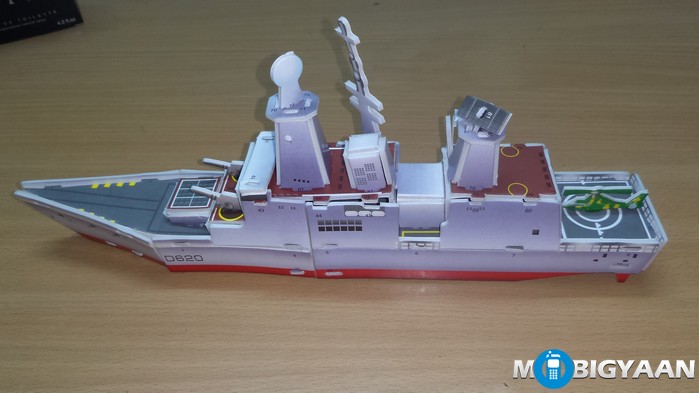
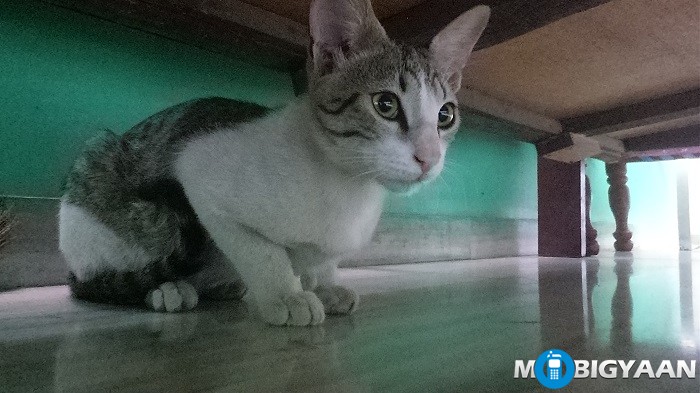
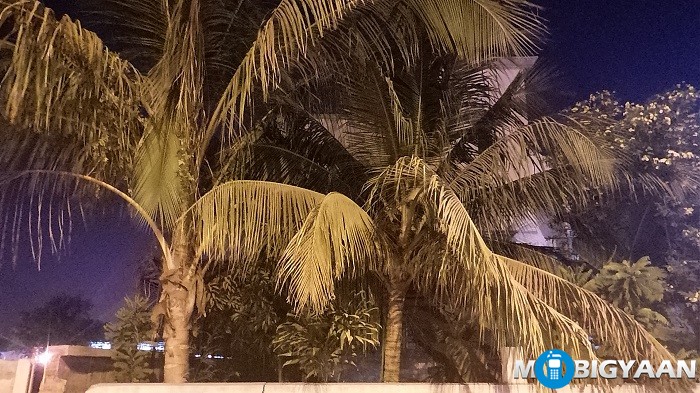
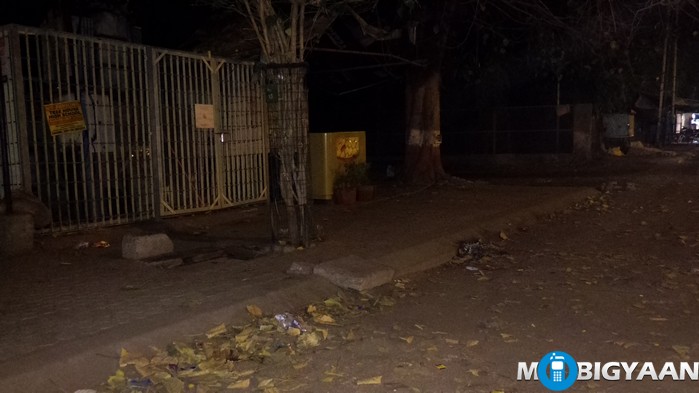
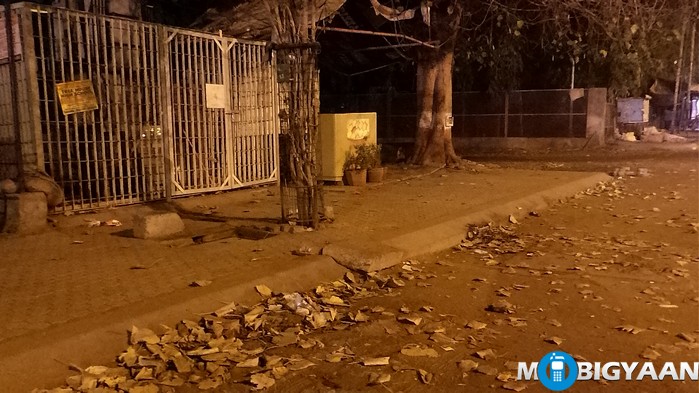
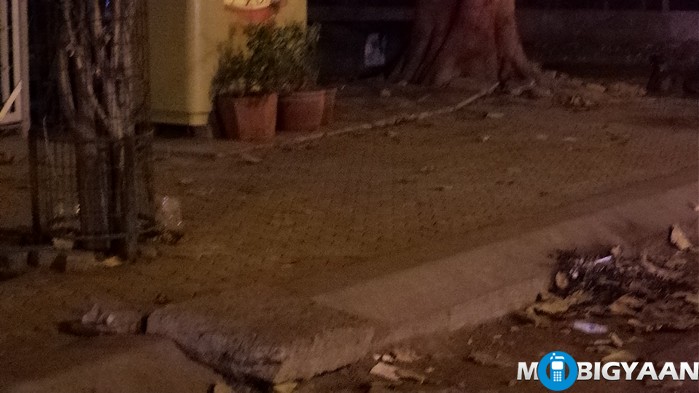
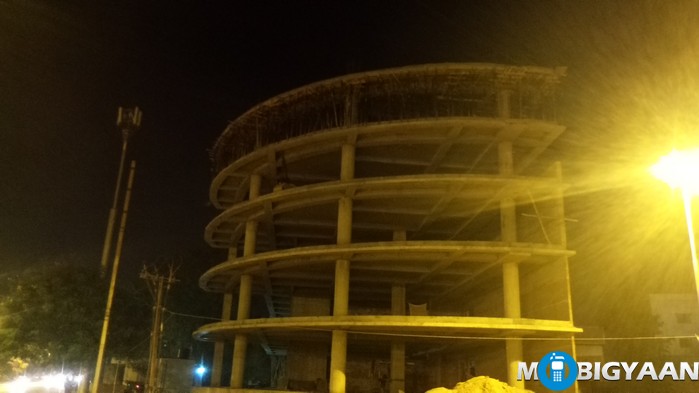
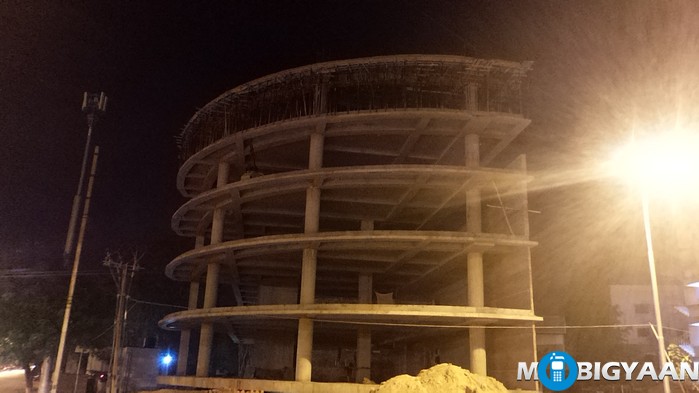
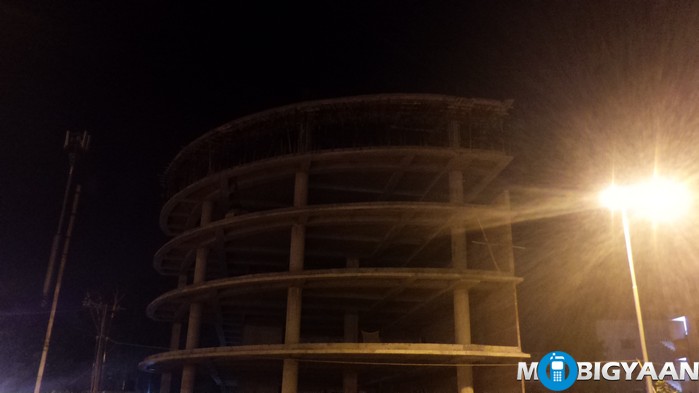





That said, a perfect camera is when it is combined with optical zoom capabilities. The main 13 MP camera performance, no doubt, is great, however, we felt that the camera is somewhat underpowered since the image quality was not at par with the Samsung Galaxy S6 and the Sony Xperia Z5. The image results came out from the camera aren’t deserving the price. A camera-centric smartphone should out-perform its competitors but that’s not the case with Zenfone Zoom because ASUS tried to put a thinnest camera lens in a smartphone.
The main camera can easily beat the mid-range smartphone cameras. We think the camera performance could have been a bit better. The Optical Image Stabilization (OIS) works brilliant, we didn’t notice any blurry images in daylight. We got a few over-exposed images when in HDR mode, the camera sometimes creates a mess under certain conditions. The images appear to be excellent in quality otherwise dull in Auto mode. The HDR mode will help and also the manual mode with exposure settings tweaking the gamma scale of the image. The dual-tone LED flash liberates the light evenly.
The best thing we liked in the camera is the dedicated camera keys. We also liked the 5 MP front camera performance, it takes very good selfies The wide-angle lens on the front camera can cover group selfies too.
We found out that the camera app was buggy in such a way that it crashed a few times while capturing HDR images. It also wasn’t opening at times. Using the camera for longer heats the phone a bit. The camera responds later that means it is quite slow in capturing the shots. The optical zoom responds a couple second later after pressing the zoom buttons. The slow-motion videos were much like the Zenfone Max camera. We were not surprised with its slow motion video recording. Cheaper smartphone like LeEco Le 1S captures amazing slow-motion videos. The Zenfone Zoom’s camera could have been improved somewhat better since camera is the main hotspot here.
Storage and Connectivity
The ASUS Zenfone Zoom comes with very large 128 GB of storage internal which can be expanded further using Micro SD up to another 128 GB with a total of 256 GB of onboard storage. Plus, a 100 GB of Google Drive storage and a 5 GB of ASUS Web Storage is both given for free. The Google Drive is provided for free for 2 years and ASUS Web Storage is, however, given for lifetime free of cost.


Battery Life
We know flagships perform better than any other mid-range devices, but battery life is also important and for a fact, most powerful devices will drain battery too much when used heavily. As we know, the Intel Atom processors aren’t the best when it comes to battery life, the ASUS Zenfone Zoom is powered by a 3000 mAh battery that runs average. Though the battery is considered as an average, it ran poor in certain conditions. We saw a system process called ‘Android OS’ that was putting stress on the battery. The Zenfone Zoom never lasted a full day since then, and using it for days didn’t gave any extraordinary results but average battery life. However, we tried to reset the device, but we got the same darn results. We think it’s related to a software issue.
The battery can be found drained completely on the 2nd day when used moderately. You can still use the device and get 2 days battery backup if you perform below moderate tasks on the ASUS Zenfone Zoom. To get you an idea, we ran a few games, played with the camera, and used apps like Facebook with minimal usage, with Wi-Fi turned on, the battery results we got were quite fair, giving 2 days battery backup. It seems like these tasks are below moderate usage and trying to play games and camera for a longer period will eventually drain the battery. See our battery stats of the ASUS Zenfone Zoom.
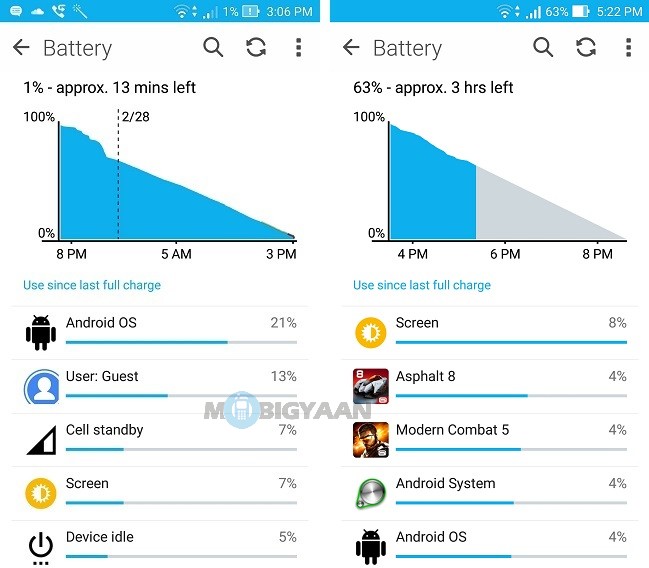
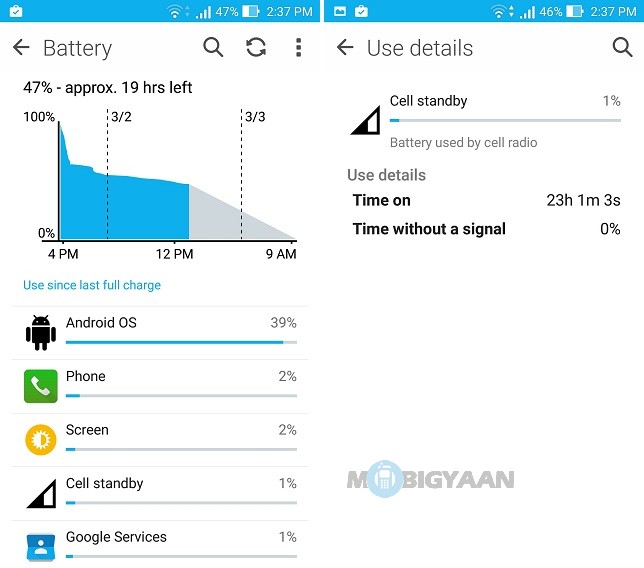
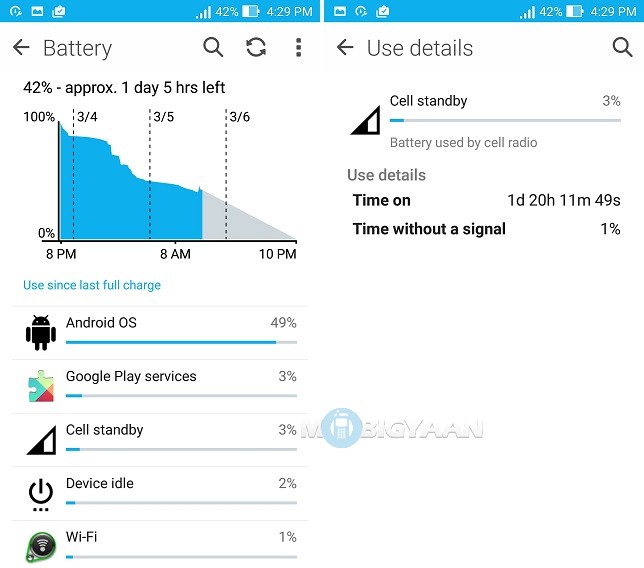
More battery can be achieved with the battery management software. It comes with 5 options named Performance, Normal, Power Saving, Super Saving and lastly, Customized. The super saving can give you ample of battery juice if you are on low battery. But because you want the battery to run longer, you don’t want to end up with a flagship performing like a mid-range device, do you?
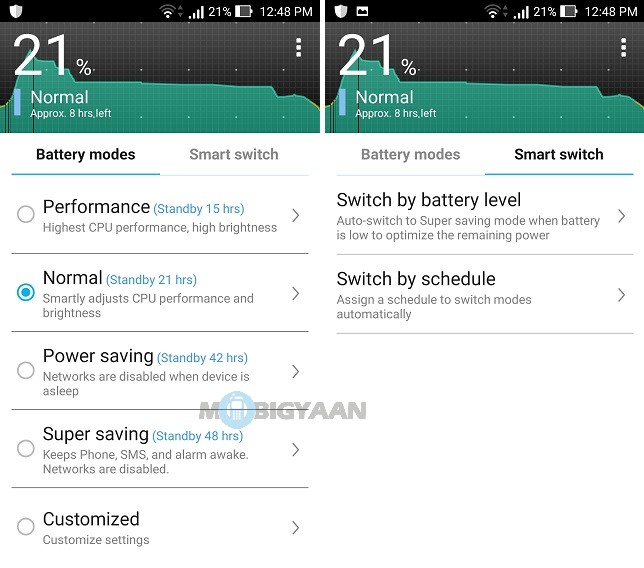
We tested the battery by running apps, using the camera and playing games. To make you understand better, take a look at our battery benchmark table of the ASUS Zenfone Zoom.
ASUS Zenfone Zoom – Battery Life Table:
[table id=8 responsive=flip /]
Pricing, Variants, and Support
The ASUS Zenfone Zoom is available for a price ₹37,999. There are two color variants, one is back and the other is white.
- Zenfone Zoom Black
- Zenfone Zoom White
The Zenfone Zoom provides one-year manufacturer warranty. You can find the support information on the MyASUS app.
Verdict
Apart from the performance, people are now looking for a smartphone with an excellent camera, however, the Zenfone Zoom isn’t the best when it comes to the camera. ASUS can, however, make camera improvements in the next iterations. We liked the camera zooming capabilities and it turns out that ASUS has created world’s first smartphone with thinnest 3x optical zoom ever to fit in a smartphone without popping out the lens which you usually see in the digital cameras. With a strong build, stunning looks, a powerful hardware and a camera that’s as good as a pocket digital camera and a large 128 GB storage to gets all your camera stuff inside, the Zenfone Zoom can be considered once.
As for the price, the Zenfone Zoom costs ₹37,999 which seems to be on the higher side of the price as the smartphones around ₹30,000 priced bracket can easily offer similar performance. The battery on the Zenfone Zoom runs shorter itself. The camera quality won’t give you surprises. If you are a camera enthusiast want to try out the optical zoom and can spend 38 thousand bucks on a camera-centric smartphone, Zenfone Zoom fits right in.
Pros
- Premium Design
- Strong Build Quality
- Camera supports 3X optical zoom, 12X total zoom
- Fast performance, 4 GB RAM
- 128 GB Storage, 100 GB Google Drive, 5 GB ASUS WebStorage for lifetime
- Micro SD support
- Customizable ZenUI interface
Cons
- Mediocre battery life
- Price
- Camera could have been better

